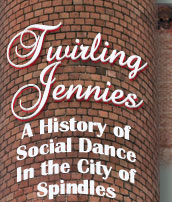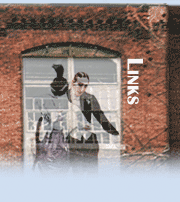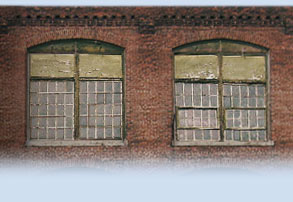| Although the elegant Nichols and Hutchins building on Merrimack Street hosted one successful party after another, on top of the costly construction delays the owners had suffered came financial issues for the country as a whole. In the fall of 1873 there was a serious financial panic, one that threw much of the world into a recession for six years and decimated the customer base of countless high-end establishments. Around 1880 the economy began to grow again and for a time it must have seemed that Levi Nichols and Melbourne Hutchins's hard work might finally be putting them on solid ground. But when the nation again entered a depression in 1882—Lowell's economy being particularly vulnerable given the city's fading role as a manufacturing powerhouse—Nichols and Hutchins were forced into bankruptcy.
The restaurant's stock and fixtures were sold off in late March of 1882 and the building soon passed into the hands of Kimball & Co., dry goods dealers. Various businesses went on to occupy the building and in 1888 the Railroad National Bank, originally founded in 1830, assumed ownership. A decade later, in 1897, the bank's plans to remodel the structure were published in the Lowell Sun:
"A BRIEF DESCRIPTION OF THE BUILDING.
The building is 31 feet by 100 and four stories high. An additional story and a new front are to be built.
The changes in the front consist of the first and second stories being mostly of plate glass, the entrance to remain where it is at present, the upper three stories to be of Bedford, Indiana limestone, which is nearly white, similar to that in the court house only lighter and the surfaces are tooled.
The upper part of cornice is of copper. The window sashes are so made that they can be revolved for washing and yet when they are in place can slide up and down as usual.
The front is supported on steel soles that are 36 feet long. These reach from the basement floor to the third floor.
The additional story is to be made into one room or several just as may be wanted.
The stairs are to remain as they are at present."
Just four years after this remodel the Railroad National Bank merged with two other banks, the Merchants National Bank and the First National Bank, both of Lowell, to become the Union National Bank. This new consolidated bank set up shop in the Merchants National Bank building and the Railroad Bank's own building was sold for $1 to Charles S. Lilly, an attorney, presumably in some sort of trust arrangement.
For four decades following the Railroad Bank's liquidation the building was home to a variety of businesses and boarders until, in 1942, it was purchased by the Bon Marché Dry Goods Company. The structure joined the main Bon Marché store, built in 1887 and expanded in 1927, to house this iconic Lowell business until the company finally closed its doors in 1976. It's worth mentioning that when the Bon Marché was first built on Merrimack Street in 1887 the owners came up with a unique solution to the rock ledge problem that had cost Nichols and Hutchins so dearly fourteen years earlier. They built their foundation around the massive stone and made the outcropping a feature in their bargain basement touting their "rock bottom" prices. As for Levi Nichols and Melbourne Hutchins, they went their separate ways after their Merrimack Street venture failed. Levi Nichols went to work for a competitor, Dudley Page and his partner, F. T. Nunn, a few blocks east on Merrimack, running their bakery department and commuting some distance from his then-home on Loring Street. Page's firm would thrive for decades and the sidewalk clock Page erected in the nineteen-teens in front of his Merrimack Street restaurant is a landmark to this day. But Nichols didn't live to witness Page's long years of success; he died in December of 1888 of heart disease and is buried in the Nichols family plot with his wife and children at Lowell's Edson Cemetery. |
 |
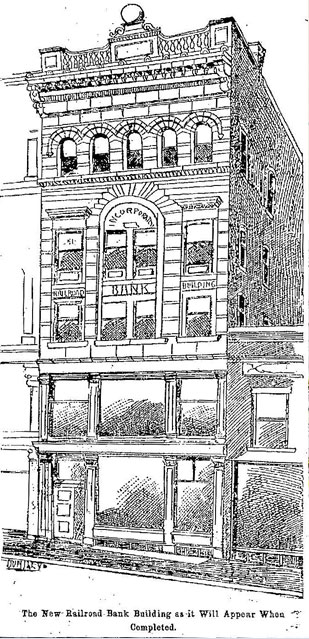 |
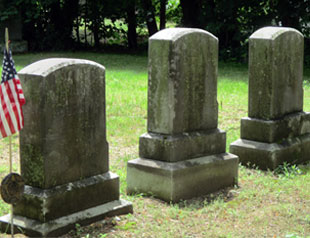 |
 |
Melbourne Hutchins took his wife, Julia, and his teenage son, Charles W., and moved back to the family farm in Westford which he by then owned. Melbourne and Julia ran the property and lived to see their only child grow up, get married at the First Unitarian Church in Lowell in 1890, and, sadly, die of consumption just two years later. (Ironically, his Uncle Warren, in whose memory Charlie had been given his middle name, had also succumbed to consumption in his early twenties.)
Julia Hutchins passed away in 1909. Melbourne died in 1912, at the age of 75, of a pulmonary hemorrhage. The little family is buried on a hillside in Chelmsford's Forefathers Burial Ground behind the church where Julia and Melbourne married in 1865. |
|
